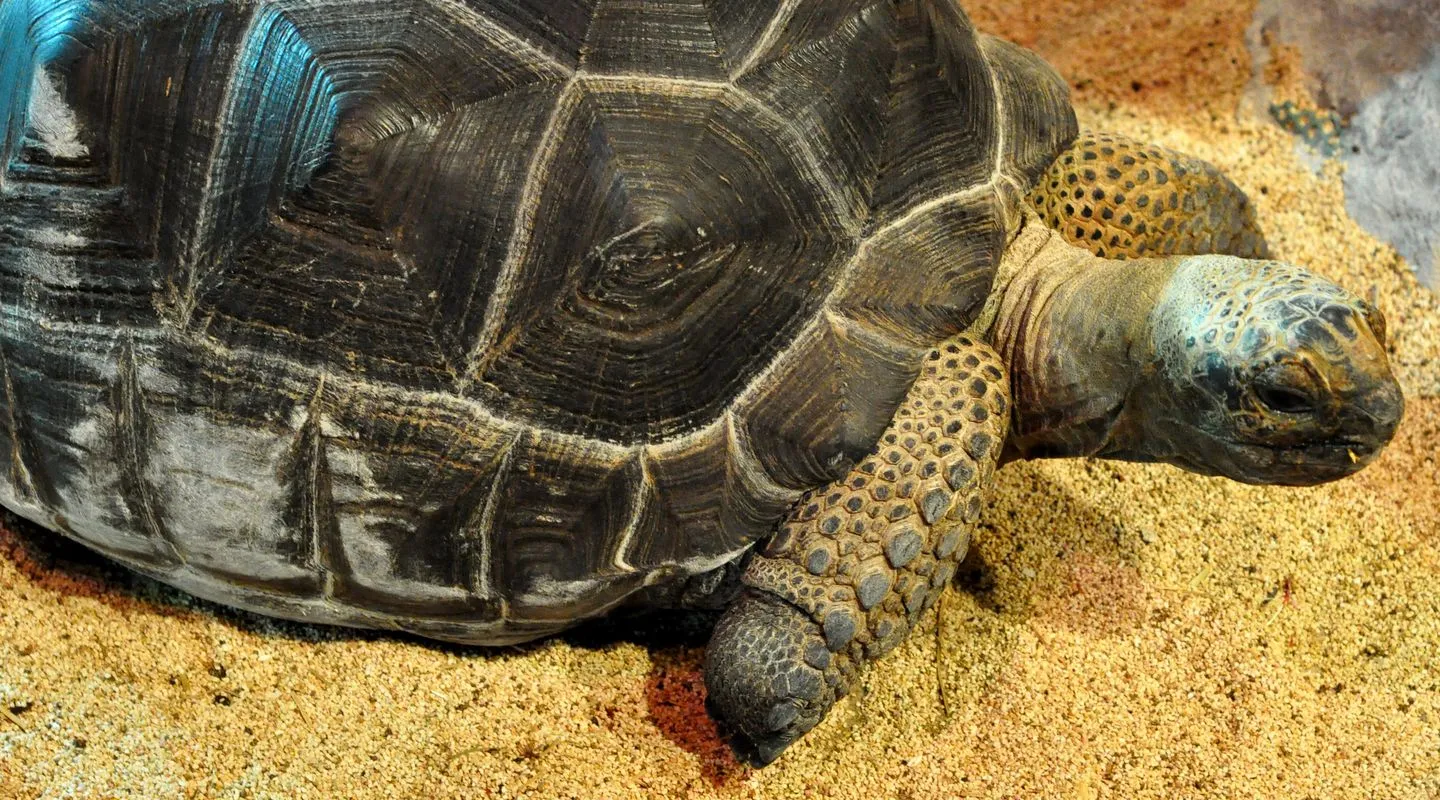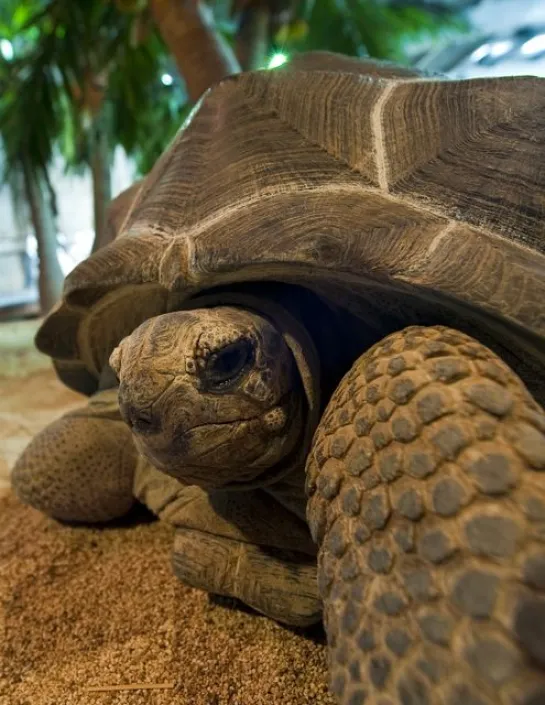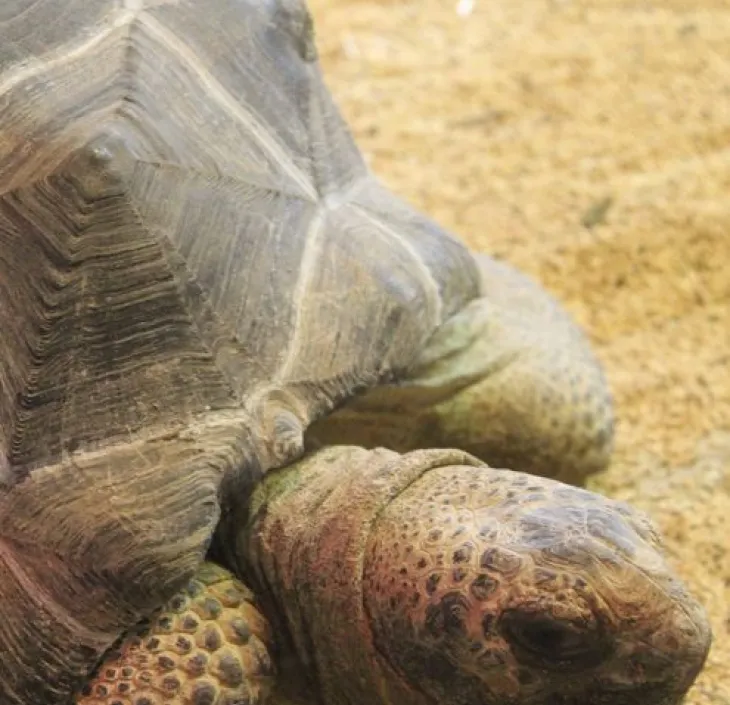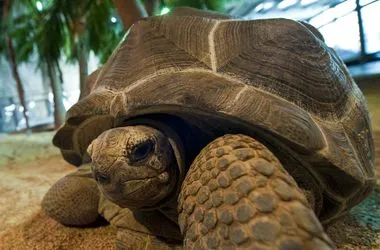Depending on which island it lives on, the Aldabra giant tortoise can lay between 5 and 19 eggs at a time. They lay their eggs from July to November, just before the rainy season.

Reptiles and amphibians

Identity card
appendix II
In the Seychelles, specifically on Aldabra Atoll.
It lives in open grassy areas with trees and bushes or scrub, and swampy mangroves.
1.30 metres
It feeds mainly on a variety of dwarf plants, herbaceous plants and reeds.
100 years on average

It is the largest of all land tortoises.
Depending on which island it lives on, the Aldabra giant tortoise can lay between 5 and 19 eggs at a time. They lay their eggs from July to November, just before the rainy season.
In the year 2000, researchers introduced these tortoises into the Ile aux Aigrettes reserve on Mauritius to save the ebony forest, which had fallen victim to logging. Indeed, by eating the fruits of ebony trees and spreading their seeds with their faeces, they can restore the ecosystem of the tropical forest. Almost 10 years later, the giant tortoises had fulfilled their mission.
It lives in open grassy areas with trees and bushes or scrub, and swampy mangroves.
This species was rediscovered by explorers in the Seychelles, specifically on Aldabra Atoll. This atoll, which is made up of 3 islands (Grande-Terre, Malabar and Picard) has been transformed into a reserve for these tortoises.
This giant tortoise lives up to its name as it is the largest tortoise on earth. It can measure up to 1.30 metres in length and, depending on where it lives, it can weigh from 80 to 150 kg.
Aldabra tortoises drink through their nostrils! This is a form of adaptation: owing to the expanded height and length of their nasal chamber, they can even drink from very small puddles.
Its population is estimated to be 150,000 individuals concentrated on the Aldabra Atoll islands.
Des rivages et des Hommes

The Ocean Mag
In the spotlight
Poissons, crevettes, requins, les animaux qui se reproduisent ou sont élevés à Nausicaá rejoignent les espaces d'exposition.

Article
Savez-vous combien d’espèces de requins sont à découvrir à Nausicaá ? Apprenons-en plus sur ces animaux fascinants !
Article
Which came first, the egg or the fish? A brief overview of eggs and reproductive strategies in marine animals.